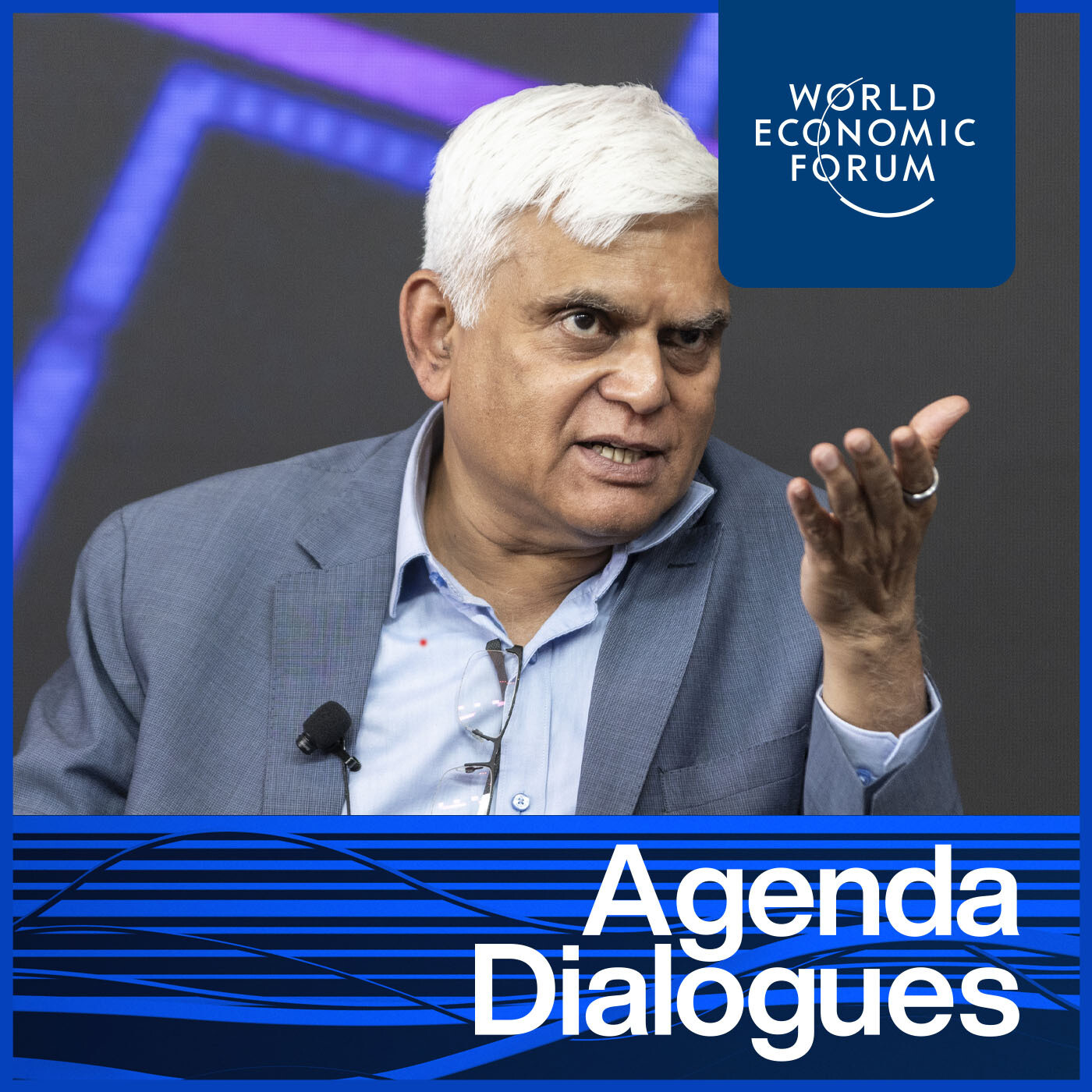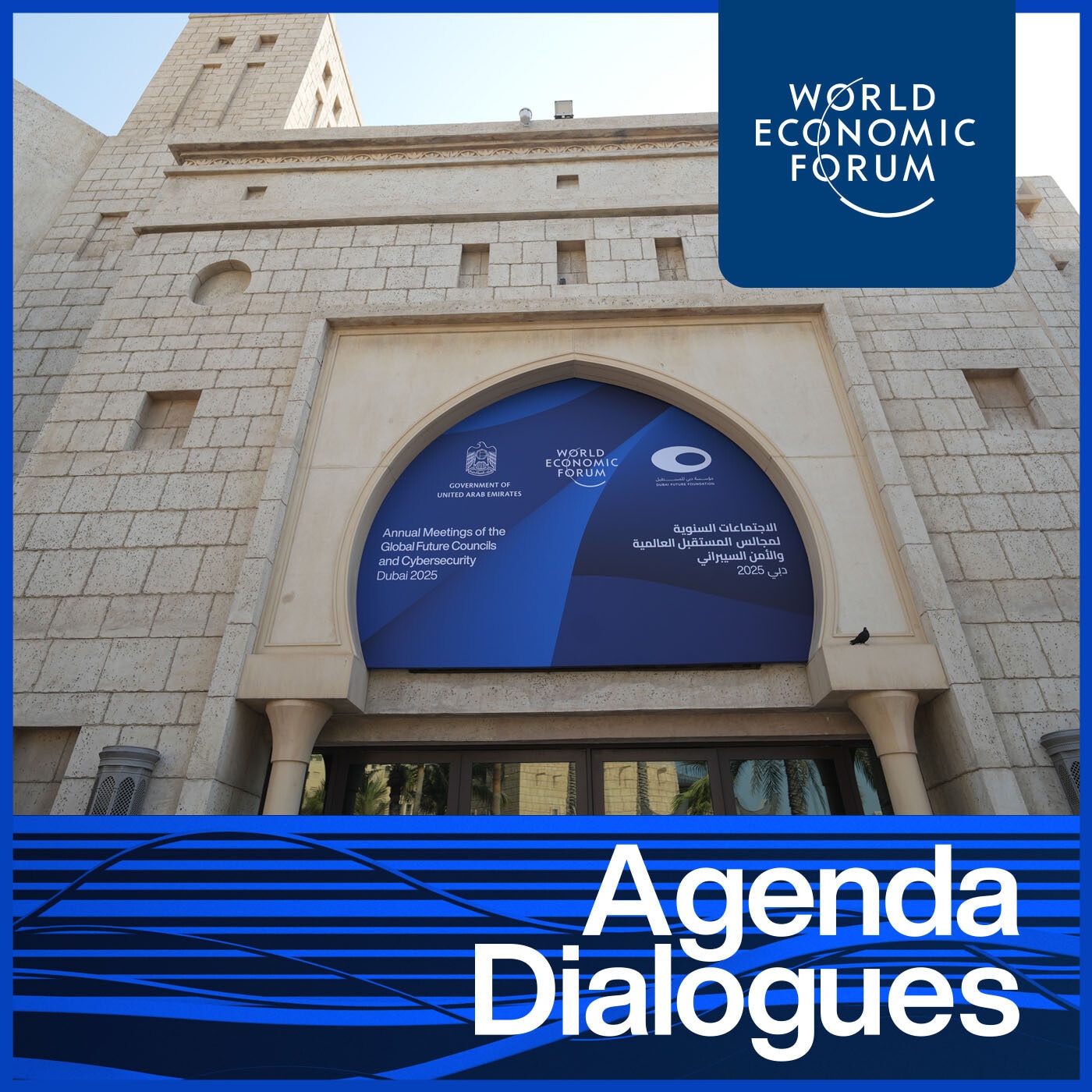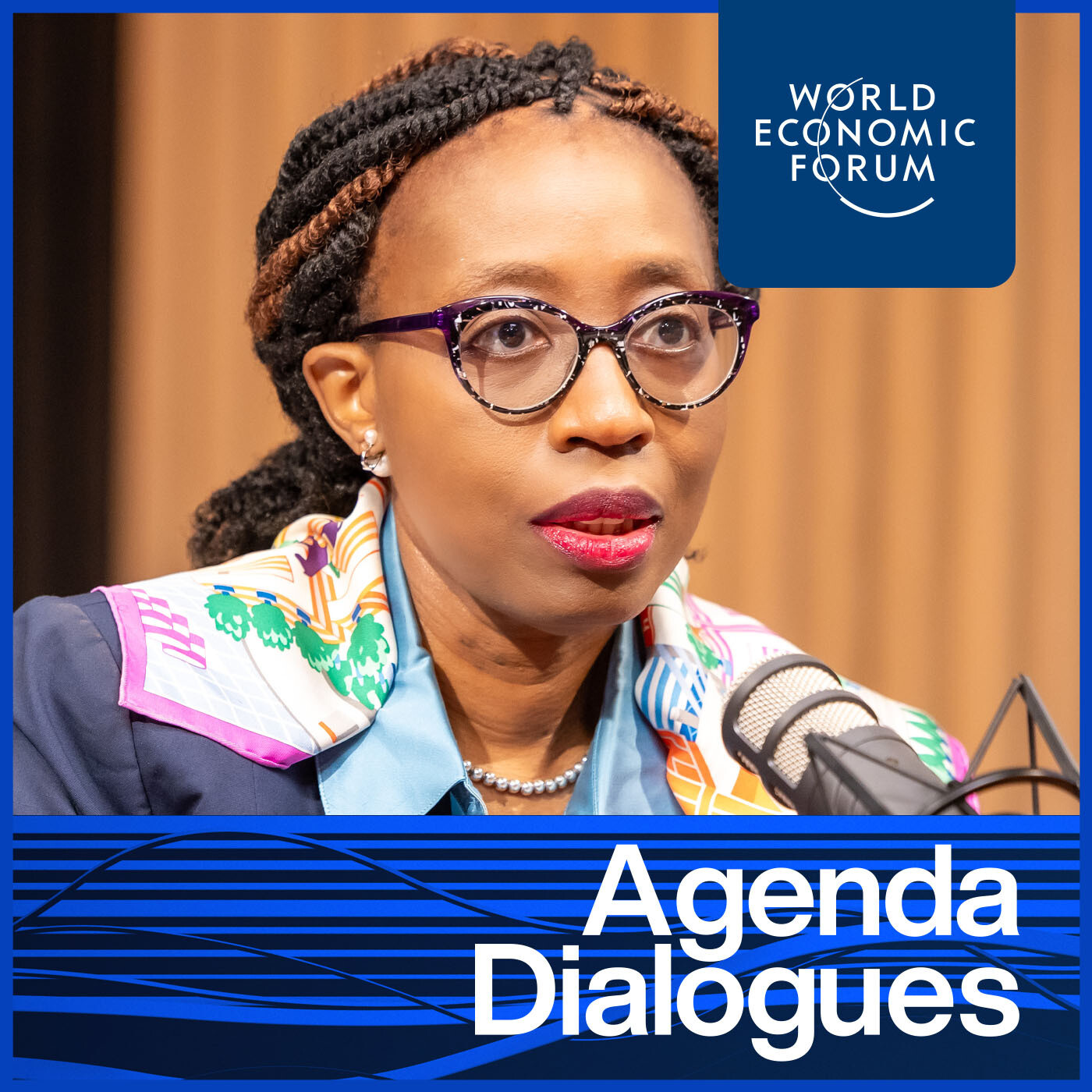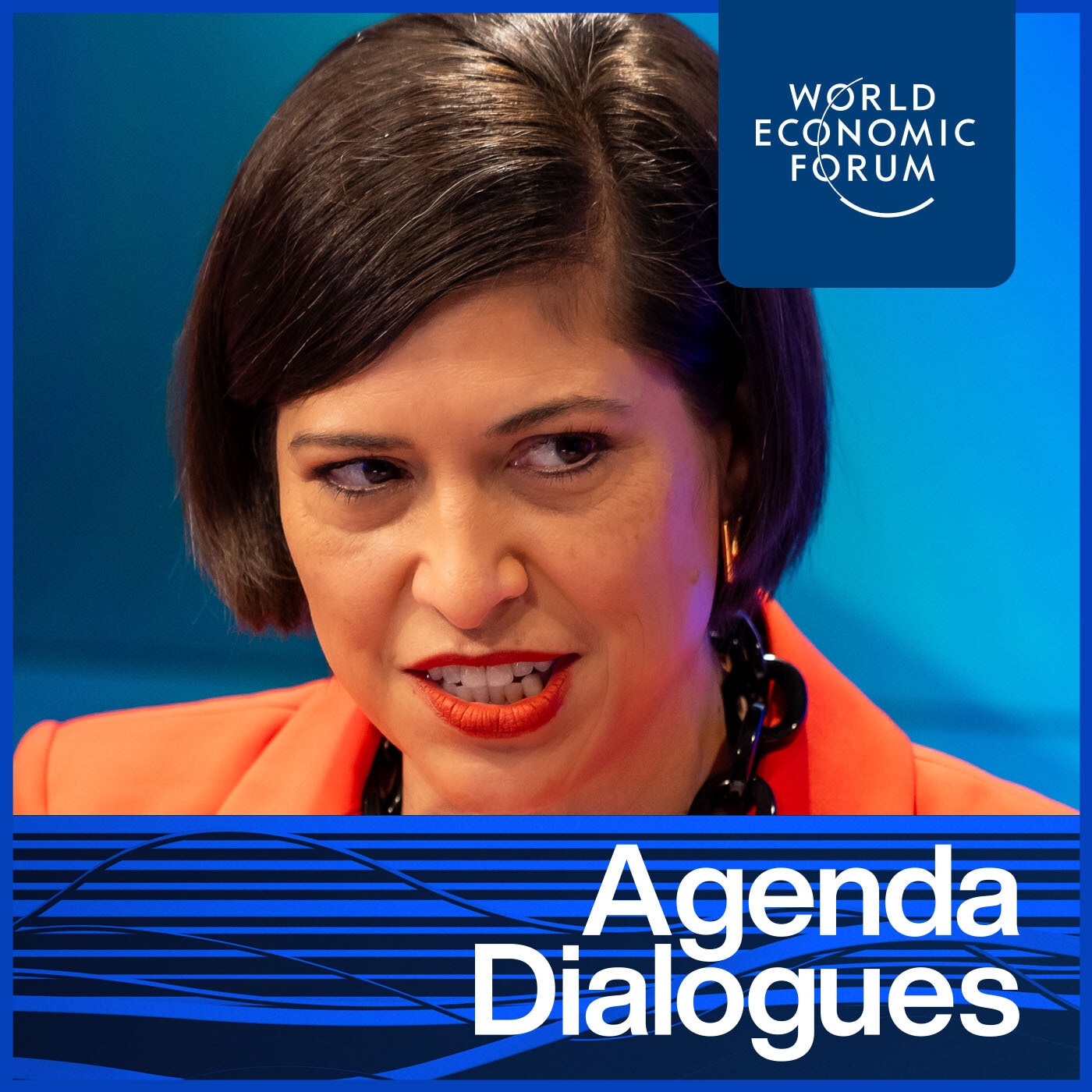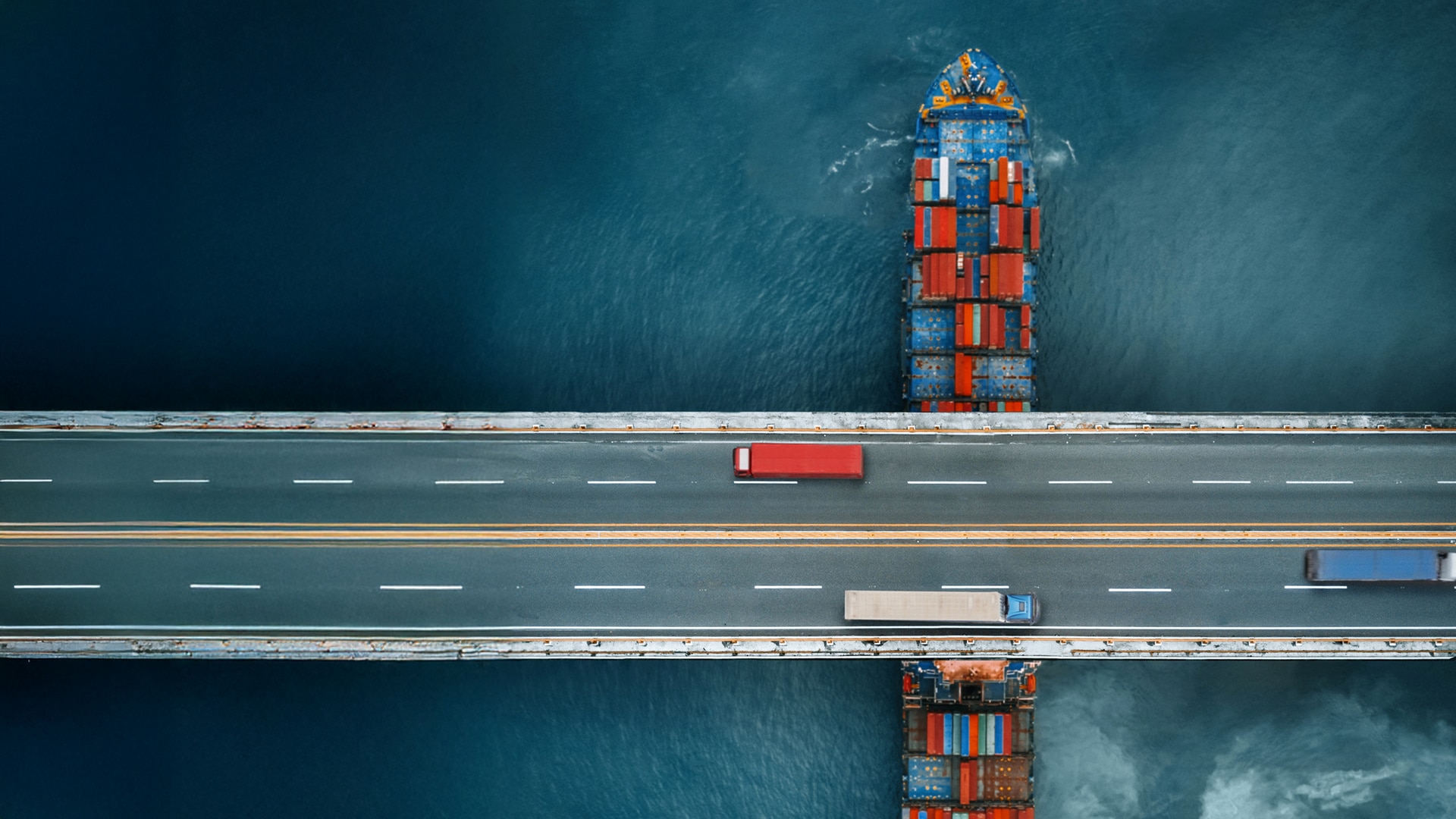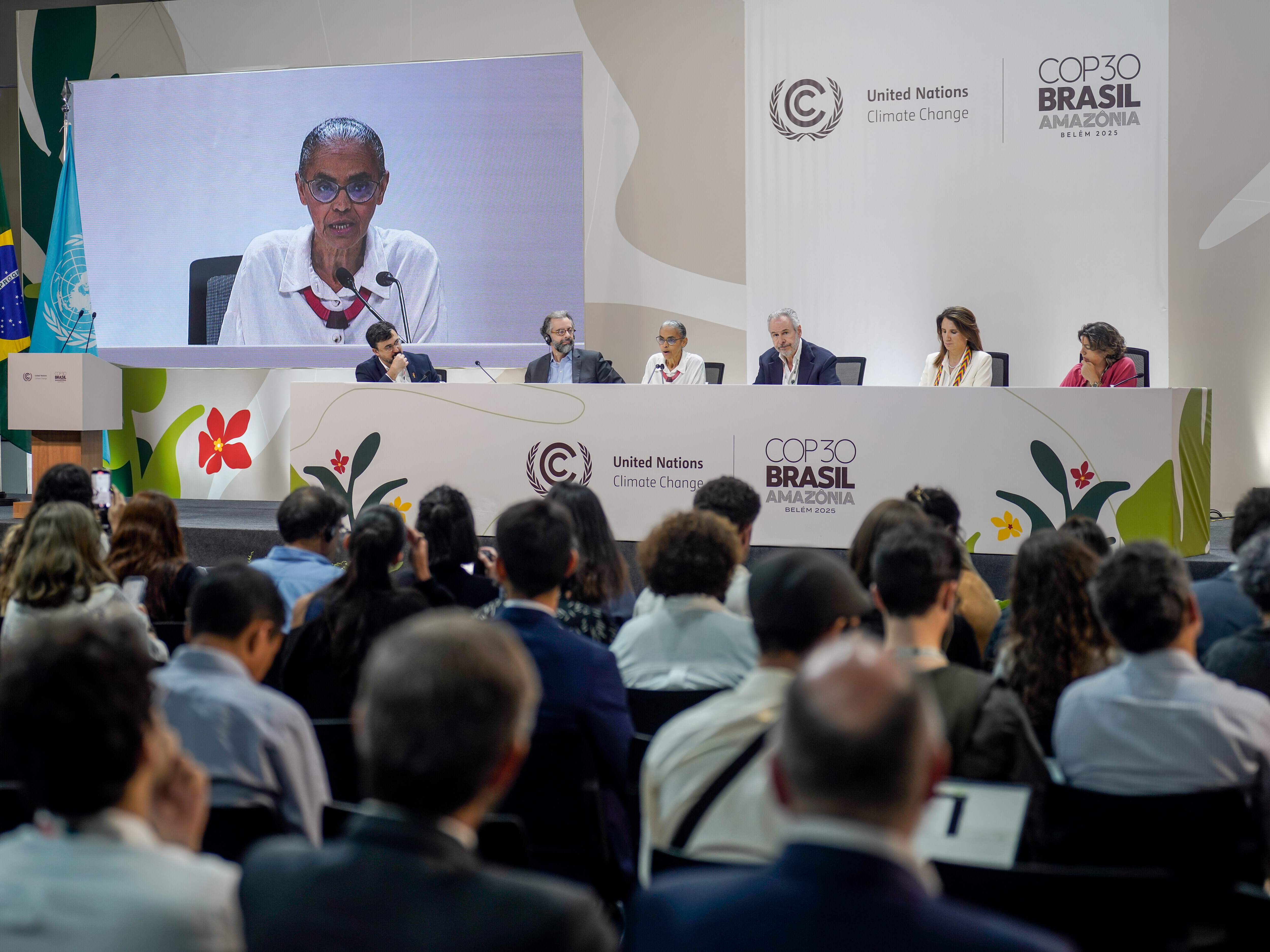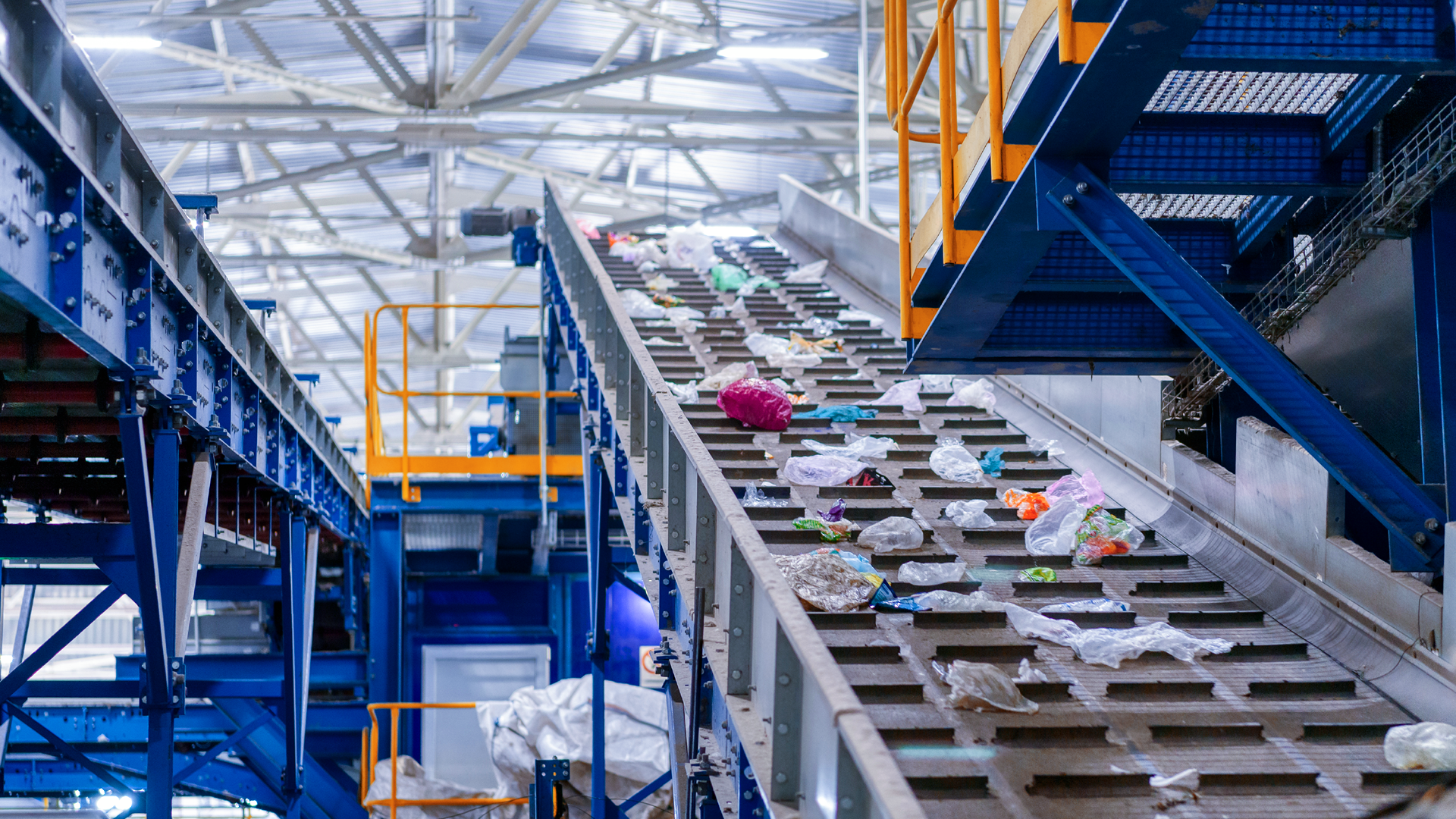Davos 2024: Net Zero Industries
Transcripción del podcast
This transcript has been generated using speech recognition software and may contain errors. Please check its accuracy against the audio.
Juliet Mann: Hello, welcome everyone to this live stream session at the World Economic Forum Annual Meeting 2024. We're looking at Net Zero industries. I'm Juliet Mann, an anchor at CGTN and the host of talkshow The Agenda and I'm delighted to be here with you.
We're going to be talking about how manufacturers are going to be able to collectively harness new technology, new innovation, to really navigate the green transition sustainably but at the same time to maintain growth because you know what? This is a sector that accounts for one-fifth of global carbon emissions and it uses about half of the world's fossil fuels their energy. So even though going green is the pulse of the boardroom, a lot of commitments have been made on that journey to net zero.
Only one in two companies is on target to meet their goals. Now, if you in the audience hear that, think that's not good enough and you'd like to know what we can do about it. Well, you are all in the right place. So, what is holding manufacturers back?
Well, there's a bunch of technical financial and organizational stuff and access to information can be limited. And as we'll hear, many industrial companies are realizing but know that they can't do it alone. But it makes more business sense to partner up and collaborate along every step of the supply chain.
So what we're going to do is we're going to look at the good practices, we're going to look at the new technology and the innovation that's out there and we're going to pinpoint what needs to happen next. And by the way, this session is linked to the industry net zero accelerator initiative at the World Economic Forum's Centre for Advanced Manufacturing and supply chains. And if you want some bedtime reading the latest white paper on this is The “No-Excuse” Opportunities to Tackle Scope 3 Emissions in Manufacturing and Value Chains.
What happens here is going to shape the strategy of this initiative in the year ahead. So it's important stuff, important stuff. So we've got lots to talk about. And at the end is going to be a chance for all of you in the audience to ask your questions. So get thinking. I'm going to introduce you to our panel. Really excited to have all of you here.
First of all we have Gwenaelle Avice Huet, who is the executive vice president of Europe operations at Schneider Electric in France and she's also a World Economic Forum young global leader. We've got Holger Klein, the chairman and chief executive officer of ZF group, recently back in Germany, after a long stint in China but he's also part of the Alliance of CEO Climate Leaders.
Another one of those is Brand Cheng, the chairman and chief executive officer of Foxconn Industrial Internet from China. And here we have Martin Lundstedt at the president and chief executive officer of Volvo Sweden, another one who's part of the Alliance of CEO Climate Leaders.
So first I think we need to set the scene. Where does the manufacturing sector currently stand on the path to net zero? Brand, let's start with you.
Brand Cheng: Alright, so actually, if we look at the manufacturing sector and its supply chain, actually it represents about 30% of greenhouse carbon emissions. So, it's a lot of challenges, especially for SME [small- and medium-sized enterprises], because the data transparency that might involve of course, might be involved with some technology challenges and as barriers. So I think the collaboration will become very important.
A couple of points important to raise. One is the policy and regulation, which means each region may require some standard and incentive or regulation for you to follow up. The second thing is like a financial investment. So it's still virtually estimation. The costs are always a concern in a business, right? So I think in the manufacturing segment, we probably need more financial ease to invest and also have some financial support to let them do that, digitalization to make the data transparency.
And three, probably is like R&D – research and development – and new technologies to resolve the issue we are facing. So somehow we still need leaders in each industry. Four is risk management platform, which we need to build a common platform, so everybody can follow.
There's a standard as I mentioned, like that. So it's a joint effort, a showcase first, then with a new technology moving on and gradually we can hit the commitment, you know, for the net zero, eventually, like that. That's my, you know, observation.
Juliet Mann: We were talking before Martin and Holger was saying that you are leading the industry in a way: you're bringing all your suppliers with you. How would you say that the big picture is for manufacturing on that path to net zero?
Martin Lundstedt: But I think we have, of course, been working with these topics for a long period of time and not at least when it comes to scope one and scope two. Just to give one data point, I mean, our biggest operation in Europe and that is our Ghent operation for truck assembly in Belgium, became fossil-free net zero in 2008.
So the scope one and scope two journey and also when it comes to buying energy etc. has been ongoing for a long period of time. We know how to do it and its execution, if I put it like that. And the big thing that is happening now is the discussion around scope three and that is really positive for everyone in the value chain.
Because what is happening is that if you take Volvo as an example, 24 years we should deliver everything fossil-free – which is a huge undertaking – means that we need to have material change 25, 2030, given the fact that we are a $55 billion company in 190 countries and that means that drive or the scope three that represents almost 90+% of our emissions is just a joint effort.
And what we're doing now both downstream and not at least upstream then when it comes to the manufacturing that represents maybe 70% of our added value, is to actually partner up with our key partners when it comes to the tier one structure because they can also lead the way to supporting us for their partners and their partners upstream.
And this is a big shift towards – when it comes to the traditional relation between people in the value chain that has been rather transactional – move into a much more a partnership structure. So on the effort of chief purchasing officer is really driving a cultural change on how do we source, how do we actually transmit the message in order to get the journey going? And how do we actually take a lead in some cases in order to really get the needle moving?
We're also ready to pay a premium if needed, all ready to co-invest to make it happen, etc. So the scope three mastery here is the big shift. And that is because everyone talks about ecosystems. But at the end of the day, an ecosystem must be meaningful, of the ecosystem in the complete value chain is very very meaningful ecosystem in order to get to that sale.
Juliet Mann: So it's not enough just to say right, this is Volvo's goal for 2024. You need everyone to be on the same page and to be able to take those steps as well. So Gwenaelle, let's talk about those shifts that are needed for net zero to be that engine for sustainability but also that engine for growth. What's the outlook at Schneider Electric?
Gwenaelle Avice Huet: Well, thank you very much. I think you have the right question because in the industrial sector, first we think about quality, we think about cost, we think about productivity, we think about, you know, delivering on time and we question about sustainability. And what we have to showcase is that it's hand in hand.
In reality, sustainability is bringing productivity and just to give you one example, within Schneider Electric, we started the journey on sustainability 20 years back. We have grown the business by four times. So it is just good for business. Yes, it's good for business. Is it easy? No, it's not easy, because it's a cultural shift.
You have to embark, you know, the manufacturing, the industrial setup, so that people are truly committed. And that's the big shift that we have to make. First, it's not really technology because technology exists. It's carrying the technology but before that it's really making sustainability as a priority and making sure that we walk the talk in everything that we do in an organization.
And the second element, rebounding on what you were saying earlier, is that it's not only us. It's every partner, customer, supplier – have to involve them. Just to give you one example, when we started a journey on sustainability, we wanted to embark our suppliers. So we said let's take our 1,000 suppliers trying to reduce the emission by 50% in 2025.
Juliet Mann: Was that a condition of doing business with them?
Gwenaelle Avice Huet: Yes, it was a condition but we didn't know how to achieve that.
And I think it's good because in sustainability, if you reach or if you determine a target that you know how to reach, you will not reinvent and the way we're thinking about sustainability. We're thinking our business model, we're thinking the way we addressed manufacturing, we're thinking the way we approach suppliers, so we didn't know how to reach this target.
But finally, it took like two years for us to reach out to the suppliers to involve them in the journey to do training because they didn't know how to calculate their carbon footprint at the time to bring them into the direction just to show that at the end of the day, it's culture beyond technology that is already existing, scaling. It's embarking suppliers and customers in this journey.
Juliet Mann: In terms of that that culture beyond the technology Holga, who is setting the tone? And what best practice solutions from the private and public sector are helping make the progress to achieve that industry net zero.
Holger Klein: And let me start perhaps here in Davos. You know, I think we have a great commitment of the leaders here in Davos, who really want to make a difference with their companies. I think the First Mover Alliance is one example where we go into scope three into the verticals.
For example, we as an automotive supplier to customers like Volvo etcetera, we committed on buying 10% of our global steel volume now is green steel. Yeah. And that was something which was created in Davos. And all of us now went out there and asked for green steel and that creates then the capacity in the market because otherwise it doesn't make sense.
Yeah, there needs to be always a business logic behind it. For me, the interesting, building on what Martin said, is now what do we master? And where do we see our challenges? And I would say for us as a company, we by 2040, will be climate neutral. In 2030, we will have reduced our emissions in scope one and two, everything we can influence by 80% and for scope three, only 40%.
And to ask why only 40%, because we need to bring the value chain along. But the proof point is now not 2040, we need to measure it year by year whenever I look at those numbers. Hey, it's only six years from now. I need to come back here and tell you it worked. Yeah. And this is where we are all in it together and I feel the momentum.
This is different from what we have perhaps seen a couple of years ago. Now, asking the question, what does it take? So I give you an example.
My headquarter is just two hours north from here at beautiful Lake Constance. Yeah. And if you are out for tourism, it's beautiful. Come and visit. Yeah. But unfortunately it's a very remote area and we have major sized component factories there. So what I need now is infrastructure. I need green energy. I need the investments into green energy, I need hydrogen.
And if you think about the map, probably it's not on top of the agenda of the guys who plan the infrastructure now to connect to the south. That's a town where I have my headquarter. So there's a lot to be done and public-private partnerships to create the infrastructure and regulation-wise we see a huge diversity.
Where in China for example, it's technology open to whatever it takes to bring the carbon footprint down. In Europe, we have a lot more regulation. And some of that is very, very complicated and perhaps even misleading. So perhaps we need to become less complex than that.
Juliet Mann: I want to talk more about that, what's holding everyone back. Because you're talking and you're all chiming in with each other about how it's important for companies to talk to each other along the supply chain. But Martin what about what governments are doing, what policy measures are actively supporting this transition and what could do better? Who could do better?
Martin Lundstedt: No, but I don't think I mean, it's fair to say that we have seen a number of legislations that have been highly both efficient and effective. If I look at our sector response to the Euro norms as we know Euro 1, Euro 2 Euro 3 for emissions, not at least for the closed by emissions. Nox particulate matters have played a very important role.
And now we are down to levels that are, so to speak, extremely low and we've had a discussion about the next step. And then when you've had the successful journey, you tend to hold on to that.
The thing is that the big shift now is going into purely for searching solutions, when you as a spin off effect, get also zero, nox and particulate matters. And what I think is a big loss is to continue to, I mean, push regulation in the direction where we want to go but also decomplex when it doesn't make sense anymore because we have a tendency to add and not to do the cleaning. And I mean, it's like a cooperation.
We know that from time to time you need to prune the portfolio. In terms of product lines, businesses, you're able to be whatever we need to prune the regulatory portfolio because, otherwise, we will not see the forest for the trees. And the forest here is a net zero journey that's absolutely necessary. And then we need to make sure that we are concentrating on that. So that is number one.
Number two, if I take the complete deployment now or because scope three, what is beautiful about that is everyone will come to logistics. You know, everyone has to address logistics and could be 6% of your top line or your emissions. It could be 20% or 4%. Doesn't matter everyone, has to do it.
The interesting piece about that, is that you think about, yes, I have a truck here – electric or hydrogen powered, fuel cell powered electric or whatever – that is also, here, that is the equipment. But that needs to be times – and I did deliberately say times – infrastructure, times grid capacity, times green energy, times reasonable VSO in terms of carbon pricing, because it is times and a plus, because if everyone of those are zero, it is zero. That is mathematically proved, that is times right.
And that we need to think about. And Europe in particular has not have an intentful view on their balance sheet. In terms of energy systems, in terms of infrastructure, in terms of detail built out, in terms of a lot of different things. When we look at countries and regions like China, Korea, Singapore it's completely, and many more, is a completely different view on how does the balance sheet look like in order to host this?
We need to come back to that discussion. But the political system for many different reasons that we can all take today has not been able to do that because I mean. Someone said wisely yesterday, when know what is right to do. But we don't know how to be realistic when we do it. And I think that is a very good way of putting it.
Juliet Mann: And they also need quite a lot of funding to be able to do that. So I wonder if something that could help us maybe new technology. So so let's talk about that when I also the emerging technologies that are really demonstrating that promising potential to help us on this journey.
Gwenaelle Avice Huet: Yes, well, um, in terms of technology, I think that everybody in this forum are talking today about AI, generative AI etc. And we may think about some applications but this is also applicable for net zero industry, for the manufacturing and we have to realize that plants have application most of the time it starts with the hardware but then with the hardware we connect the hardware and with AI we have plenty of use cases.
And that's the power of it. That's the beauty of it because each use case is developed, you know, on a regular basis. So we improve, you know, the production plant, we have more IoT [internet of things] embedded, etc and that's how we develop the industry 4.0.
And on that front, I would like to highlight that we have been awarded by the Wold Economic Forum, Lighthouse, which is very famous, I would say, collaborative and network across the World Economic Forum, highlighted that our plant in India, which is I would add, has been awarded for that because of all of the IoT inside, aiming to reduce the consumption for energy.
This is exactly by more than 57% and reducing the waste by more than 60%. At the end of the day, it's reduction of costs, etc. And everything is based first on hardware but then it's software. It's AI and this is where we will see more and more development, more connected products, more efficiency, more obligations.
Juliet Mann: Brand Cheng, do you agree? Is this how AI is going to set the agenda?
Brand Cheng: Yeah, I got something to share with you, for AI is so attractive and exciting recently, right. So, actually facing the beauty of AI, also we look back at the impact. Actually, when you run an AI server, come out and compute power because you have tonnes of power than before. We used to use air cooling right, but it couldn't be sustained. For, example, every GPU comes with more than 400 watts. Right?
So you've had tonnes of GPU computers. So you're going to offer an entire city power to support it. Compute power. Are you going to do that? No. So technology watts. So now we come up with a new material, silicon carbide, as an example in the semi-conductor segment, the saturation of material which has a better summer consumption, better dissipation and lower power consumption.
So because it uses a different approach for cooling this, which is going to be a liquid cooling system. You know, in addition, what I see is that you must include in the liquid cooling probably going to be more popular. So which would reduce. So we talk about how to approach it is one is reduce. Reduce all this kind of power consumption.
In addition to that we have some showcase how to reduce this. For example, we have global factories. A lot of air conditioners. So you're right. So it was a lot of power. If you don't upgrade your air conditioner systems, which approach a lot of IoT systems to come with that data? Make sure that there is transparency that you can buy by means of AI power or computing power.
Then, with the data you have, you can come up with an AI and have it safe. So, in 2024, we probably have to serve more than 1.3, meaning kilograms per hour.
The second thing you can do is, not only reduce, also replace with the new robot energy or recycled material. As you may know, if I was doing a lot of high-precision mechanical work, then see, is the automotive industry the same? So we use a lot of recycled aluminium. So we see the achievement of saving, like, more than more than 2000 RMB per ton of the, with the recycled material and, new energy for sure.
You also require the ROI for this, right? But more important is to resolve, as I mentioned, new technologies. You use new material, you use new approach technologies. Then, you can make sure of the beauty of AI. Otherwise, I use more power, which goes off that power. So as a closed system you do not only think about a beauty, also you need some solution.
Juliet Mann: It's a balancing balancing.
Brand Cheng: And then you can realise how very important the framework is. As we mentioned, either government or enterprise, like where we are in China, the government has a very supportive chance to support, understand that. We already passed the carbon in 2022 and we've got to finish the new energy, you know, the renewable energy, by 2035 and reach net zero by 2050.
So all these require lots of collaboration with industries, with governments. So we set a standard and so, our scope three, the suppliers know where we're gonna go. Everything goes back to the business interest. If the criteria are there, they don't fit, and they are gonna lose business. So there is a business interest, so data incentive to drive themselves to meet these, so I test to that I tell them now it's not just an activity or a goal, it's a competitiveness. Fulfilling this is this right inside your bottom cost beyond material. Think about this.
Holger Klein: I think two examples from our industry. First of all, you design the carbon footprint into the product. What does it mean if you don't start with a product design? You will unwillingly increase the carbon footprint. I give you an example, we now presented a magnet free electric engine. What does that mean?
If you look at the production and value chain of magnets, that accounts for 50% of the carbon footprint for an electric engine. If you just replace that by new inductive technology, then you can do without. So, it starts with our designers and their innovation makes really major steps to solve some problem and then I go to the other side of the cycle – remanufacturing.
And I think for us circularity becomes more and more important and it's a super business. You know, we have more than 2,000 people remanufacturing transmissions and other components in over 20 plants worldwide.
And I'll tell you these remanufactured transmissions aim better than the new ones. Because certain things you can exclude like material failure or things like this. This transmission already ran for a while and as as good as new. So it's a business and it saves another.
Juliet Mann: But is it saving you money and or is it more expensive? Because it's one thing having all of this new technology that's going to increase sustainability but what about growing your business too?
Holger Klein: So growing the business is, of course, on the side where we designed a new product but the aftermarket and remanufacturing is a growth area for us because otherwise, we don't solve our our problems in the value chain.
Martin Lundstedt: Yes, just to mention on remanufacturing we will also be working together on that. Not only myself but we are also doing that and we see an increasing interest. So it's also, which is very important to your point, it's an attitude change also that I mean to take here.
Your new remanufactured engine or transmission or torque or whatever, it's actually seen differently than it used to be only five years ago, both because we can actually prove with data that it's actually functioning equally good or in some cases better. And talking about growth. This is growth because otherwise it should just have been scrapped. Now it's coming into the cycle again.
So that is the business case that is very positive. And if you think about it with, if we can dream for a little bit to say okay, we will have a more global price of CO2 [carbon dioxide] will make that model even more attractive, it's similarly attractive. And because more and more companies and customers downstream, they are incorporating also the cost of CO2 into their sourcing decisions, which is very, very positive, obviously.
Brand Cheng: Yeah, so one example for your reference is. Foxconn Industry Internet was visiting Shanghai, Asia in 2018. At the moment, we have revenue like $50 billion and also we come with, like 190,000 employees globally.
Five years past, in 2022, we finished a $71 billion, which is more than 40% gross and our headcount still remain at 190,000. But because we drive the digitalization finding with the ESG, so Foxconn group we are driving an equation for SDG, the sustainable development goal, which equal to EPS plus ESG. Actually, EPS and ESG, carbon emission is complimentary.
If you took it as part of your cost competitiveness, then back to us is to look at this we increase the data transparency so we know when we do plan to take action that we know how to collect action, collect data, become the entities, you can buy analysis right. The idea of action for counter, right?
So, this make yourself very clear and one methodology is purely showcase, then put the whole thing with the milestone you have. Also in supply chain, they see your goal, they follow you then. So the enterprise as, you know, frankly we in an industry, we also take the position we need to lead the entire supply chain, the ecosystem follow us, then every industry do the same thing, then at the end we will reach the goal.
Juliet Mann: So, it's being part of the ecosystem and doing all together. Gwenaelle?
Gwenaelle Avice Huet: So, just maybe one point to rebound and to expand on it a bit on the concept of circularity.
Brand Cheng: OK.
Gwenaelle Avice Huet: Because when we talk about circularity, we're talking a lot about remanufacturing, which is super good. We have been awarded also five Lighthouse from the World Economic Forum for circularity. It is totally new business model and it's also a change of mindset. Believe it.
So many people want to have brand new stuff. They don't want used stuff. They want brand new stuff. So it's a change of mindset. But this is not only remanufacturing, it's also in our vision of circularity, it's end-to-end, meaning is used better.
First, we need to use better, it's transparency. So it's premium. It's a good design. It's everything embedded into a product so that at the end of the day, the consumers know what they're buying.
It's trust, transparency and environmental performance. Use better, then it's used longer. How to use longer product, lifetime extension. How to make sure that we don't replace the whole equipment and purchase the product that is deficient. This is repair maintenance models etc. This is the second pillar.
And then we have the recycling and for which it is also super critical because energy transition is consuming lots of raw materials. If we want to keep the path of development, we need to be used raw material and that's where it comes recycling. But I think circularity, it's the very good system from use better, use longer, use again and it's where we can track the momentum.
It's not easy because regulation and market is not always ready for it.
Juliet Mann: Everybody here is talking about what their company is doing and how they think they're making a change. But I'm wondering, Holger, what and where would you like to see more strategic partnerships? What's missing here that could really change the pace and accelerate this journey to net zero sustainably while maintaining growth?
Holger Klein: There might be some points I pick one; I would say digital and sustainable need to go hand in hand. And what do I mean? There are initiatives like we're driving as industries Catena-X where we are trying to measure the footprint throughout the value chain and well what would that give us?
I would have a bottle like this and I could tell you from the iron ore, tools, logistics, tools, the glass, what is the carbon footprint of this bottle and then I could price it. And I could tell you and now you are doing good, because you now pay 20 cents more but we were very conscious that you have a green product. And this is cross-stakeholder, cross-value chain and that's digital and I think that's something where we can become better, some of us get started.
It's, I need to let these guys into my factory because they can see my data. So, in former times, it was a no go, how can I let marketing know what's the real cost of manufacturing my plant is. But this is not the point. We partner in a way that he knows exactly what the carbon footprint looks like. I tried to do that with my suppliers. And you can take out so many inefficiencies in the supply chain that it becomes a new business model again.
So, short answer: digital. This kind of cross-value chain connection.
Juliet Mann: Martin, do you have a short answer?
Martin Lundstedt: My short answer on that. Yes, to build on a very good example for us. If you look at the whole battery value chain, for example, we know that on the truck side, since trucks are used, personally cars are not used. They are used 3% of the available time as you know. So the battery will last over the whole lifecycle probably.
But for a truck, they are utilized 85% of the available time, meaning that if you can track that in real-time, what has been the behaviour, what has been the cyclicality etc. you can have a very informed decision about, so to speak, what you do, by that when you're taking it out from the track and utilising that for a second life and eventually recycling because that is extending the life cycle.
It's also giving a guarantee in because trust is the ultimate human capital. And in order to do that you need to say okay, this is what the battery has been about. Now, we can utilize for stationary power or power etc.
So, that is really how the power of connectivity into IoT then and into, so to speak, informed facts that you can utilize them even more force for them with the different levels of AI to take real-time decisions that will actually stand the life and make so to speak to use cases even better for the first customer and the second customer. So digitalization for sure.
Juliet Mann: So digitalization and circular economy talking to each other more. I mean, we've had some really interesting things come up here and I'm wondering now if we can open this up to the audience. If anyone in our audience has got a question for any of our panellists.
Go on, be the first person, be the first person. While you're... Tell you what, I'll do the first question and then maybe somebody will be brave enough to put their hand up. I think what I want to talk to you about more, is the Centre for Advanced Manufacturing Supply Chains, how useful it's been for your business, this accelerator initiative. Has it opened your eyes? Has it given you new connections so that you could forge new partnerships?
Gwenaelle Avice Huet: That's a very good question. So first, what we wanted to do is to be exemplary in our manufacturing footprint.
We have today, 70 plants that are net zero and we target to be carbon neutral by 2025. So very short timeframe. So it means that we operate today in all our different geographies in digitalization, electrification, sustainability, all embedded, when we're doing that for ourselves.
It's also showcase but you know, throughout the journey, we have ups and downs. It's not easy, as I was mentioning, in terms of technology, business model, cultural shift, in terms of relationship with suppliers with materials, for example, how to get good materials today.
Not that easy, not mature. yet. So what I think is the beauty of the initiative is to connect the dots to share what we are going though, admittedly, sometimes it's difficult but we share that across the board. And, therefore, we can be more meaningful, we can step-by-step make progress and that's how we would achieve it. This targets one example again on green material, we have an objective is to have 50% of green materials embedded in our products by 2025.
Not easy so we need to connect to us. We need to have lots of discussions with many suppliers that are shaping the industry of the future in terms of material efficiency etc. So this is something that is really meaningful in this kind of environment
Brand Cheng: Thank you. So taking the chance, I will share about the experience of our lighthouse factory as well. You know a lot of people think about the advantage of lighthouse factory is going to drive your operational efficiency. Yeah that is true but not only.
Actually, we also see that fact in energy management. You know, energy management and security management. So because you digitize everything, so you can come back, all do it together in ways that human-centric automation with the AI factory, you know. So because automation investment, also huge Cap-x, right, also involve new costs, so you can use like the lighthouse network programme. It means a pure showcase.
A company like us, we are footprint in 14 countries. Am I going to build every country from zero? No. I better have a showcase. So I can share. I can grow, so I can do tight market. Investor is going to challenge me if I had to everything from zero, right? Impossible, especially when rolling into the emerging countries, they may not have a sole mature infrastructure.
So the only way is pure showcase for you to practice. This is internally. Externally, we see another case because of the size of the appeal we have in about our team. Just last year, we held an EV company in Guangdong, you know there by taking a way of a lighthouse approach. They have the limited space for the production but with the digitalization with visualization of data and also a couple of robots, their capacity increased from 80,000 a month to 100,000 a month.
Then because waiting for a new factory in the next three years. You're not gonna have three years to wait for market demand right? So when market demand comes, tight market use this approach, they feed it and they make a record high every six months.
You know, so, I think that this is very important to tell us is you do the digitalization but the goal is pure, you know, human-centric, AI-driven, you know, data to decision factory for the manufacturing. You know, so I would encourage you to use these as examples.
Also, a side effect to us. I will appreciate this effect from a lighthouse programme is the whole engineer's, they have a one target. So they work on the same goal. Certainly they talk to each other and reach a same goal. And you'll see lots of return, which you may not imagine at the beginning, as I like to share.
Juliet Mann: Like when I was talking about how the new iteration is that they owe the inputting and upgrading and making it different when everyone talks to each other. That's how you get there. Do we have any questions? Yes, we do. This gentleman at the front – can you say who you are your questions for?
Audience member: Hello. Can you hear me? I'm ... I'm leading a leading worker in battery manufacturing. The question I have is regarding the net zero title for this panel because I heard a lot of good things regarding reducing the needs, regarding being more efficient, more refined.
But then how did you bridge the remaining gap to so called net zero and you haven't spoken on another setting, which was probably something that was quite hype in the past and I'm really looking forward to listen how you lead that in your companies.
Because reducing is great electrifying is great and then for the remaining bits, what do we do?
Juliet Mann: Let's go around the room. Let's start with you Holger.
Holger Klein: I mean, that's what I said in the beginning. I guess for us now the milestones are very important. We reach all our milestones. The further we go, the harder it gets. I mean scope one and two is relatively easy compared to what we discussed with scope three. And scope three has an upstream and the downstream and we talk now a lot about the upstream, which is how do we solve, for example, the steel challenge.
And my business deal is a very important resource and this will depend now really, on the do we get capacity installed, to have green steel and that's where we act as partners now, with the First Mover Alliance and we have CEOs with a commitment to drive this forward. And this is very pragmatic.
That's what I love about it. It's not PowerPoint. It's becoming real. Is this a challenge to come to the pure zero at the end of 2040? Absolutely. Eventually some of us can even go positive in terms of being a net contributor. Yeah. But it becomes always more difficult. If you ask me, we need to drive the last mile which is the most difficult together otherwise we have no chance.
Juliet Mann: It's like the queue to get through the security block before you get into that last bit of the journey. Martin, how about you? That last mile.
Martin Lundstedt: No, no but I think, great question and I think the whole story was about, I mean, really working through your CO2 footprint fully and understand that huge chunk taken by the way and stored really to see where you should go about it.
Just to echo what Juliet was saying about this, we need to have. It's interesting also, I mean, I've been studying together with my team also the 8-9000 companies that have actually signed for the science-based orders, including ourselves, what we see as the 2025 not super material targets is to be frank. I mean, it's -50, -20 maybe. 2030 is a milestone that is super interesting because we need to have really changed the curve.
And what is good about science-based targets is that, I mean, you're disclosing it publicly, you're getting it approved and you need also to disclose progress and corporates, what is true with corporates is we hate to lose. So and you hate to see that we are not making progress. And it's not only about executives, it's also about the colleagues and the teams and the teams are super excited about it.
And then it will be as super onward to go through vertical by vertical and it will require innovation, it will require cooperation, it will require new ways of thinking about the partnerships, participating earlier in the understanding of the product design together with our T1s [battery manufacturing term]. The T2s, we learned a lot about the semiconductor crisis, how we should actually, we worked alot together. No, we worked a lot together and it was to fix the shortage.
But we learned also that we need to connect the dots completely different, tools for innovation are known. So we're talking about so yeah, there is no there is no shortcut at the end of the day if you have this is 100% and it has to be 0%.
Juliet Mann: So no shortcuts. That's a good one to take home with us. I'd like to quickly go around the room, I'd like a last word from each of you. I want you to share one thing that you would like to see global multi-stakeholder community do to help push going greener, cleaner, more quickly. So who wants to kick this off? How about you Brand. In a nutshell. Twenty seconds.
Brand Cheng: Alright, so I think to share the information is very important.
So the new era, we use a new approach to resolve all issues. So new technology and the new capability. Each enterprise has to build out. You cannot forget when you are resolving all issues, forget to bring up the new capability, as I mentioned like a second ago. We are doing a cooling system which we never do. We are working with Schneider together to build a nice cooling system to build a new business then we resolve the other issue.
Other than just reduce or repress but also resolve. That's important.
Juliet Mann: Resolve and share information. Martin.
Martin Lundstedt: I think I mean, this is a systemic change. We are moving from a brown fossil-based platform to a green platform that requires a system change coordinated shift.
My ask would be that everyone and this is a big ask, actually take the time to reflect about the holistic view, about the systemic change but also understand where can I participate in that systemic change and do that well to execute. So, we are not actually you know, sitting and saying, well, we didn't do our vertical because they didn't do our report but it's holistic to execute on the details.
Juliet Mann: Gwenaelle
Gwenaelle Avice Huet: Well, I think the more we can talk about technologies that are already existing, the better it is because if we want to realise the 1.5 degree scenarios in reality 75% of the technologies already exist, it's just not well known.
And one example I bet that we ask the question of people and people will say, renewable energy production energy production. In reality, there is a bulk of technology on efficiency and this is where we need to communicate even more. So I think technology just advocating for technology that are already existing.
Juliet Mann: Really quickly.
Holger Klein: Cross-stakeholder haring of digital data.
Juliet Mann: Well, this has been a really exciting and insightful panel. Thank you, all of you for taking part and thank you to the audience too. You've been great and if you want to dive deeper into this understanding the impact of digital technologies and sustainable transformation for net zero as well as the collaborations on supply chain and I hope you'll be part of it.
Do continue to keep watching what's going on at the World Economic Forum and continue to take part in panels like these. Thank you very much.
Scroll down for full podcast transcript - click the ‘Show more’ arrow
The manufacturing sector, which accounts for one-fifth of global carbon emissions and over half of the world's energy usage, is taking centre stage in the global race to net zero. Yet despite a raft of commitments and first steps, around 50% of companies are off track in achieving their targets.
How can manufacturers leverage new innovations and technologies to successfully negotiate the green transition while maintaining growth?
This session is linked to the ongoing work of the Industry Net Zero Accelerator Initiative of the World Economic Forum Centre for Advanced Manufacturing and Supply Chains.
Speakers:
Martin Lundstedt, President and Chief Executive Officer, Volvo Group
Juliet Mann, TV Host, China Global Television Network (CGTN)
Holger Klein, Chairman and Chief Executive Officer, ZF Friedrichshafen AG
Gwenaelle Avice Huet, Executive Vice-President, Europe Operations, Schneider Electric SE
Brand Cheng, Chairman and Chief Executive Officer, Foxconn Industrial Internet
This is the full audio from a session at the World Economic Forum’s Annual Meeting 2024 on January 17, 2024.
Watch it here: https://www.weforum.org/events/world-economic-forum-annual-meeting-2024/sessions/green-manufacturing/
Centre for Advanced Manufacturing and Supply Chains
The Centre for Advanced Manufacturing and Supply Chains is driving a transformation of factories and supply chains through advanced technologies, empowering businesses to achieve net-zero emissions, enhance workforce skills, and build resilient supply chains. The Centre collaborates with public and private sector leaders to anticipate global trends, unlock innovative business models, and incubate new partnerships.
Links:
Check out all our podcasts on wef.ch/podcasts:
Más episodios:
La Agenda Semanal
Una actualización semanal de los temas más importantes de la agenda global
